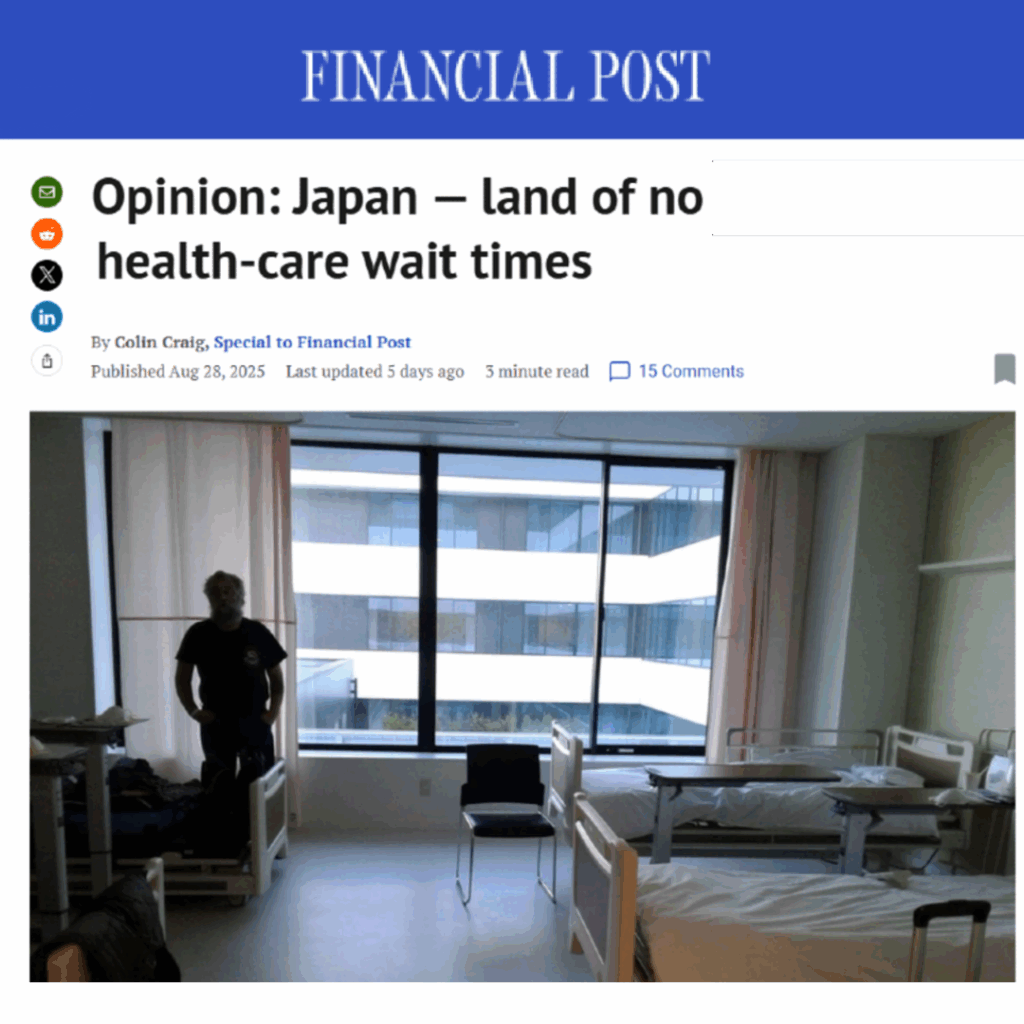“A year!” exclaimed Dr. Yoshifumi Ikeda, medical director of a university hospital in Tokyo after we described the surgical wait times Canadian patients often face. The doctor was so shocked he switched from Japanese to English.
FINANCIAL POST COLUMN: Japan — land of no health-care wait times

Our think tank was in Japan to produce a documentary on how that country’s universal health system has virtually no wait times. Yes, the country that voted instant noodles the best invention of the 20th century also has (almost) instant health care.
Need a hip operation? Pull out your calendar … how does next Friday sound? What about the week after? No one is dying in Japan after waiting months for heart surgery and no one has to wait years for joint surgery.
In 2020, the OECD studied wait times across eight categories — from diagnostic scans and elective surgery to more serious procedures such as cancer treatment and heart surgery. Canada had problems in all eight areas. Japan? No problems in any.
The Tokyo hospital we visited confirmed as much when we asked about wait times. Patients can typically get in right away if it’s serious. Maybe a month if it’s not urgent. Two max.
In Osaka, Japan’s second largest city, the director of a private hospital told us the same thing: If it’s an emergency, he can get you in today. If it’s not urgent, within the month. After we described the long waits for surgery in Canada and what was happening in our country, he sat back in his chair, crossed his arms and said, “I understand why you came here.”
The first health care lesson from Japan is to make it easy to grow the supply of health care. If you want to open up, say, a new hip-and-knee surgical clinic, you can (provided you have qualified staff). The Japanese government publishes what it will pay for different services and then non-profit, for-profit and government providers can all enter the market and receive the set payment each time they help a patient.
Japan’s approach is the complete opposite of Canada’s, where governments actively restrict the supply of health care. In this country, you can’t simply open a surgical clinic and begin helping patients in the public system. Even if you have qualified staff, government health systems are not set up to welcome and work with whoever wants to enter the market. Striking such partnerships is very political and the process is subject to intervention, including fearmongering, by special interests.
Governments in Canada also make it very difficult for patients to pay for health services at non-government clinics if they don’t want to use the public system. Outside Quebec, the law often prevents patients from paying locally — which is why they often have to travel to other provinces for care or even leave the country.
It’s important to understand that Japan’s health care system is effectively universal. When a patient receives cares, the bulk of the bill is paid by the government using tax dollars, though Japanese patients do pay a small portion directly.
Dr. Ryozo Matsuda from Ritsumeikan University in Kyoto estimated a patient would typically pay about 3,000 yen ($28) for an appointment with a family doctor. For more complex procedures, like a heart operation, there are expenditure caps. A patient earning the equivalent of About a third would pay no more than $840 for an otherwise costly procedure like a heart operation. There are exceptions for the poor and for children, as well.
The second major difference between Canada and Japan is that the Japanese typically live healthier lives than Canadians so require less health care in the first place. About a third of Canadians are obese, compared to less than five per cent of Japanese. The consequences for type two diabetes, premature heart disease and some joint replacements are significant.
Japan takes prevention quite seriously. From banning junk food in schools to requiring employees to have their waistlines measured yearly the government pushes citizens towards healthy living. Would Canadians want their waistlines measured at work? Obviously not. But prevention policies that were reasonable and didn’t intrude in peoples’ lives wouldn’t hurt.
Needless to say, it was culture shock to hear firsthand again and again about Japan’s non-existent wait times. If Canada made it easier to expand the supply of health care and took prevention more seriously, we too could get timely health care.
Colin Craig is president of the think tank SecondStreet.org.
This column was originally published in The Financial Post on August 28, 2025.
You can help us continue to research and tell stories about this issue by making a donation or sharing this content with your friends. Be sure to sign up for our updates too!


